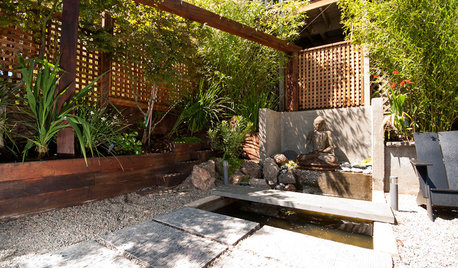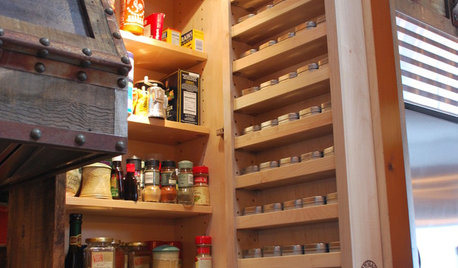Fusarium Wilt control. Ideas and steps taken
structure
15 years ago
Related Stories

HOME TECHNew TV Remote Controls Promise to Do More — Without the Struggle
Dim your lights, set up user profiles and discover a remote you can't lose. Welcome to the latest and greatest way to change the channel
Full Story
LANDSCAPE DESIGN3 Steps to Choosing the Right Plants for Your Patio
Make every plant count in your small city garden by considering these criteria before you buy
Full Story
CONTAINER GARDENS3 Steps to Creating Quick, Easy and Colorful Succulent Containers
Take a bright container, add a colorful succulent or two and have a professional, summery design in minutes
Full Story
ORGANIZINGOrganize Your Way to Love in 9 Steps
Make room in your house for love and romance through easy cleanup
Full Story
REMODELING GUIDES6 Steps to Planning a Successful Building Project
Put in time on the front end to ensure that your home will match your vision in the end
Full Story
KITCHEN DESIGN7 Steps to Pantry Perfection
Learn from one homeowner’s plan to reorganize her pantry for real life
Full Story
MOST POPULAROrganizing? Don’t Forget the Essential First Step
Simplify the process of getting your home in order by taking it one step at a time. Here’s how to get on the right path
Full Story
REMODELING GUIDESSo You Want to Build: 7 Steps to Creating a New Home
Get the house you envision — and even enjoy the process — by following this architect's guide to building a new home
Full Story
BEDROOMS13 Simple Steps to a Perfectly Made Bed
Drift off to dreamland in a delightfully soothing, artfully dressed bed worthy of a posh hotel
Full Story
ORGANIZINGSmall Steps to Organizing Success
Take care of bite-size projects, and your home's big picture will be an organized dream before you know it
Full StorySponsored
More Discussions






Dan _Staley (5b Sunset 2B AHS 7)
mulio
Related Professionals
Norfolk Landscape Architects & Landscape Designers · Foothill Ranch Landscape Architects & Landscape Designers · Clearlake Landscape Contractors · Galt Landscape Contractors · New Providence Landscape Contractors · Pahrump Landscape Contractors · Euclid General Contractors · Irving General Contractors · Owosso General Contractors · Red Wing General Contractors · Foothill Farms Decks, Patios & Outdoor Enclosures · Frederick Decks, Patios & Outdoor Enclosures · Lancaster Decks, Patios & Outdoor Enclosures · Riverside Decks, Patios & Outdoor Enclosures · Wheaton Decks, Patios & Outdoor EnclosuresDan _Staley (5b Sunset 2B AHS 7)
mulio
Dan _Staley (5b Sunset 2B AHS 7)
structureOriginal Author
Dan _Staley (5b Sunset 2B AHS 7)
gringojay
rnewste
Dan _Staley (5b Sunset 2B AHS 7)
structureOriginal Author
rnewste
gringojay
Dan _Staley (5b Sunset 2B AHS 7)
rnewste
rnewste
tylenol
rnewste
livvyliv10
windclimber
structureOriginal Author
livvyliv10
structureOriginal Author
carolyn137
love2troll
rswinkle
ncrealestateguy
rswinkle
ncrealestateguy
Seysonn_ 8a-NC/HZ-7
rswinkle
ncrealestateguy
rswinkle
ncrealestateguy